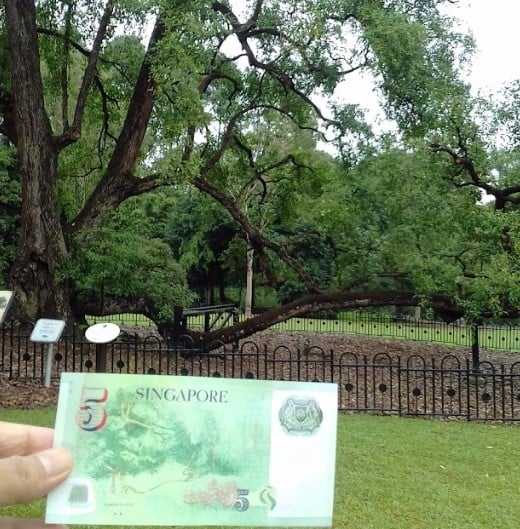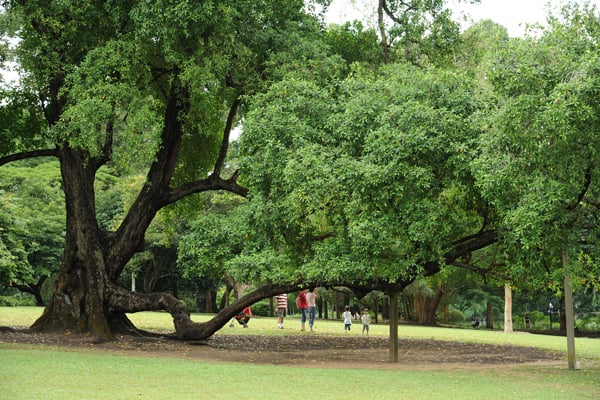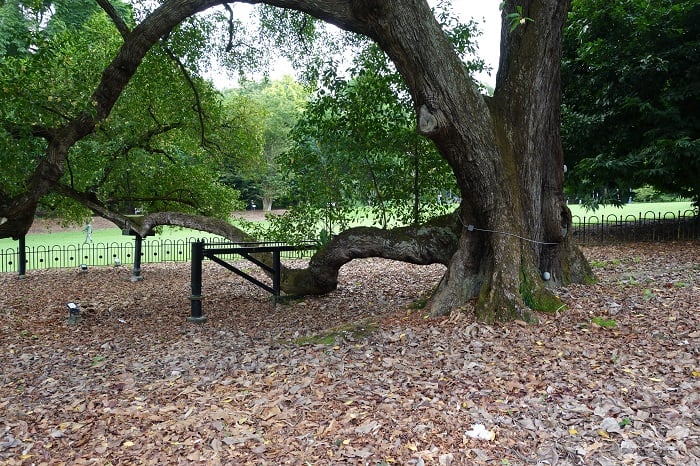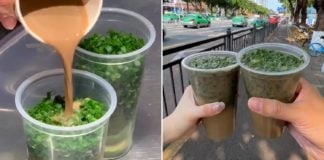Tembusu Tree On Back Of S$5 Note Is More Than 200 Years Old & Still Stands At Botanic Gardens
Though people use Singapore dollar notes every day, few may stop to admire what’s on them.
Besides the ubiquitous President Yusof Ishak in front, our newest Portrait Series of currency features various local scenes at the back.
While most of the notes have people and buildings on their back, only the S$5 has a tree.
That tree is an iconic tembusu tree that surprisingly, still stands.

Source: Google Maps
It’s located in the Botanic Gardens, overlooking the Swan Lake.
Singaporeans reminded of tree on S$5 note
Singaporeans were reminded of this tree when a side-by-side comparison with the S$5 note was shared in the Home Gardening Singapore Facebook group.

Source: Au Yeong Kok Cheong on Facebook
The image received 13,000 likes and 1,900 shares.
Some netizens thought this was interesting and intended to visit the tree.

Source: Au Yeong Kok Cheong on Facebook
Others had fond memories of visiting the tree when young and sitting on its low-lying branch.

Source: Au Yeong Kok Cheong on Facebook
Tembusu tree is aged 200 & still in the Botanic Gardens
Speaking of which, the unique branch that curves close to the ground is obviously the defining feature of this tree.
According to the Monetary Authority of Singapore (MAS), it’s an old tembusu tree that still stands on the grounds of the Singapore Botanic Gardens.

Source: NParks
It’s also more than 200 years old, which means it existed even before the Botanic Gardens was built 163 years ago in 1859.
Despite its old age, it’s still sturdy, added MAS.
According to the authority, the tree “epitomises the spirit of Singapore”, i.e. strong, resilient and continuously striving for progress.
Its appearance on the green-coloured note also ties in with the “Garden City” theme.
More information on the tree is found on the National Parks Board (NParks) website, which notes that it’s 23.7m in height and has a hefty trunk of 5.39m girth, measured at a height of 1.6m.
Its scientific name is cyrtophyllum fragrans.
Tembusu tree located in Lawn E of Botanic Gardens
For those who want to visit the tree, it’s easily accessible.
It’s located in Lawn E of the Botanic Gardens (No. 6 on the map below), which is right next to the Swan Lake.

Source: NParks
The nearest entrance to Lawn E is the Tanglin Gate near Gleneagles Hospital.
From the gate, it’s a short walk down the main path to Lawn E on the right.
Tembusu tree now fenced up
However, it’s not possible for visitors to sit on the lateral branch any more, as the tree now has a fence around it.

Source: NParks
This is ostensibly to protect the tree from wear and tear arising from generations of people sitting on its branch and stepping on its roots.
A “dynamic support system” was also installed on the tree in 2014, according to Roots.sg.
That consists of a suspension mechanism that braces the branch at three points but adapts to its organic growth.
Those who want to take a photo with the tree will just have to do so from outside the fence.
Artist chose tree due to recognisable branch
Now that we know something about the tree on the S$5 note, Singaporeans may also be interested to know that it was drawn by artist Eng Siak Loy, says Roots.sg.
Mr Eng was chosen to design the S$5 note and all the other denominations in the 1999 Portrait Series after he won a competition organised by MAS.
He decided to draw the Botanic Gardens tembusu tree for the S$5 note because it’s native to Singapore, and he remembered it from his youth as a graphic designer at the Botanic Gardens.
Describing the tree as a “distinct landmark”, the artist said he wanted to focus on the unique and recognisable branch because,
There are many tembusu trees around, but none of them look like this one.
Remarkable that heritage tree is alive & well
Many old trees in Singapore no longer exist after being felled by natural causes or human action.
Thus, it’s remarkable that a heritage tree is still alive and well here.
Considering its advanced age, it’s definitely an icon of Singapore that has accompanied the land through the ages.
If you haven’t seen it with your own eyes yet, perhaps you might consider stopping by the next time you visit the Botanic Gardens.
Have news you must share? Get in touch with us via email at news@mustsharenews.com.
Featured image adapted from Google Maps and MAS.

Drop us your email so you won't miss the latest news.









